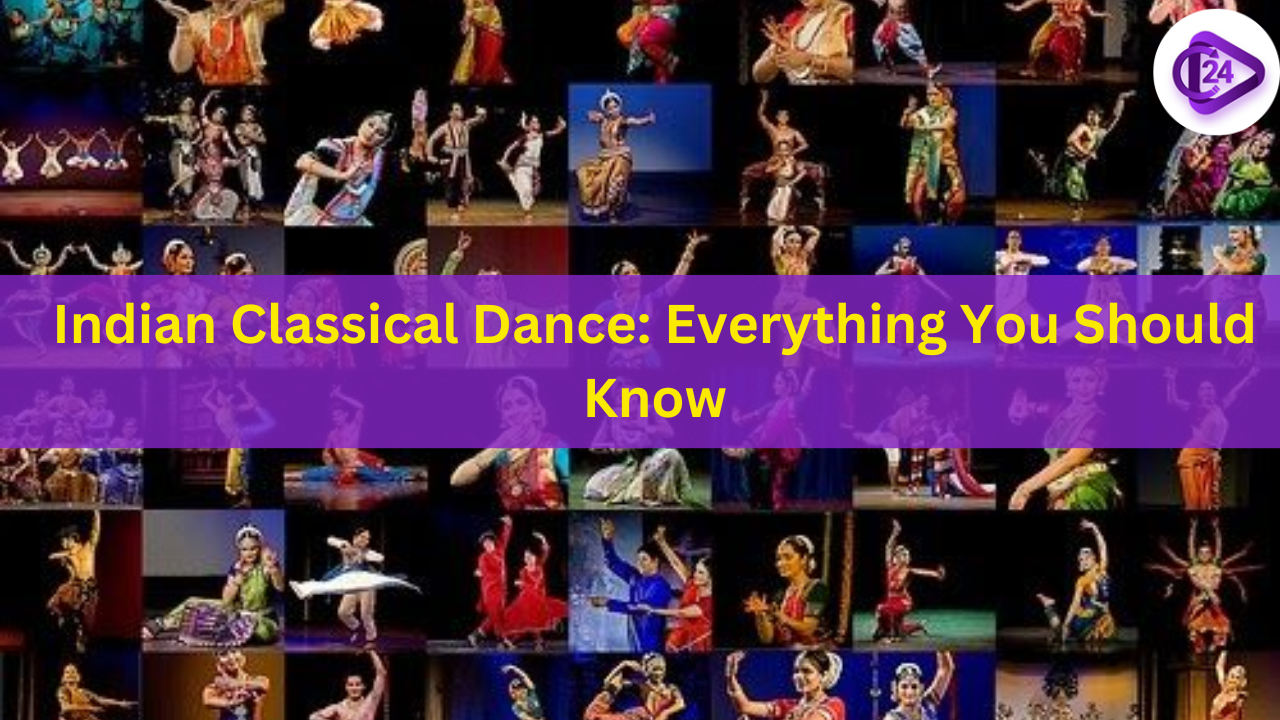Indian Classical Dance: Everything You Should Know

India is rich in culture and has numerous dance forms, of which classical dance forms are very popular across the nation. In India, there are 8 types of classical dance i.e. Bharatanatyam, Kuchipudi, Kathakali, Mohiniattam, Odissi, Sattriya, Manipuri, and Kathak. This article will brief you about the 8 Indian Classical Dances.
Indian Classical Dance: Everything You Should Know
Indian Classical Dance: History
The first source of the art of drama, dance, and music is Natyashastra, which was written by Bharat Muni.
Generally, it is recognized that the date of the work is between the 2nd century B.C.E and the 2nd century C.E.
There are eight forms of Indian classical dances i.e.
-
Bharata Natyam
-
Kathakali
-
Mohiniyattam
-
Kathak
-
Manipuri
-
Kuchipudi
-
Odissi
-
Sattriya
Those mentioned above Indian Classical Dances are recognized by the Sangeet Natak Academy.
Later, the Indian Ministry of Culture includes Chhau as a semi-classical dance form.
Indian Classical Dance: Origin
|
8 Classical Dances of India |
|
|
Classical Dance Form |
State of Origin |
|
Bharatanatyam |
Tamil Nadu |
|
Kathak |
Uttar Pradesh |
|
Kathakali |
Kerala |
|
Odissi |
Odisha |
|
Manipuri |
Manipur |
|
Kuchipudi |
Andhra Pradesh |
|
Mohiniyattam |
Kerala |
|
Sattriya |
Assam |
Indian Classical Dance: Rasas
|
Rasas/Emotions |
Attributes |
|
Shringara |
Love |
|
Roudra |
Anger |
|
Bibhatsa |
Disgust |
|
Veera |
Heroism |
|
Shaant |
Peace and Tranquility |
|
Haasya |
Laughter and Comedy |
|
Karuna |
Tragedy |
|
Bhayanak |
Horror |
|
Adbhuta |
Wonder |
Indian Classical Dance: Aspects & Component
As per the Natya Shastra, written by Bharat Muni, Indian classical dance has been an aspect of two fundamental elements i.e. Lasya and Tandava.
|
Aspects |
Details |
|
Lasya |
It refers to the grace, bhava, rasa, and abhinaya. Representation of feminine characteristics. |
|
Tandava |
It is more focused on rhythm and movement. Representation of male aspects of dance. |
While, as per the Natya Shastra, Indian classical dance has been based on three components i.e. Natya; Nritta; and Nritya.
|
Components |
Details |
|
Natya |
Dramatic element of the dance i.e. the imitation of characters |
|
Nritta |
Dance movements in their basic form |
|
Nritya |
Expressional component i.e. mudras or gestures |
Indian Classical Dance: Eight form of Classical Dance
Bharatnatyam:
-
State of Origin: Tamil Nadu
-
Textual Source: Abhinaya Darpana by Nandikesvara
-
Other name: Ekaharya
-
Transitional movements: Leg, Hip and Arm
-
Dance recitation (Person): Nattuvanar
-
The Bharatanatyam has been broken into seven main parts i.e. Alarippu, Jatiswaran, Shabda, Varna, Pada, Thillana, and Sloka.
-
The poses of Bharatnatyam are depicted on the gopurams of the Chidambaram temple, located in Tamil Nadu.
-
Other temples showcased the Bharatnatyam poses.
-
Shiva temple of Kanchipuram
-
Karnataka’s Badami cave temples
-
-
Popular dancer: E. Krishna Iyer, Meenakshi Sundaram Pillai, and Rukmini Devi Arundale
Kathak:
-
State of Origin: North India
-
Meaning of Kathak: The name has been derived from Katha, which means a story.
-
Popular dancers:
-
Janaki Prasad (Benaras Gharana)
-
Ishwari Prasad, Pandit Birju Maharaj (Lucknow Gharana)
-
Raja Chakradhar Singh (Raigarh Gharana)
-
Instruments: Tabla, manjira, sarangi, and harmonium
Kuchipudi:
-
State of Origin: Andhra Pradesh
-
The name of this dance form was derived from a village in the Krishna district of Andhra Pradesh.
-
Kuchipudi was known under the generic name of Yakshagaana.
-
In the 17th Century, Siddhendra Yogi conceived the Kuchipudi style of Yakshagaana, guided by his guru Teerthanaaraayana Yogi.
-
Ornament: Rakudi (head ornament), Chandra Vanki (armband), Adda Bhasa and Kasina Sara (necklace)
-
Popular dancers: Yamini Krishnamurthy and Raja Reddy
Mohiniyattam:
-
State of origin: Kerala
-
The name of Mohiniyattam was derived from Mohini, who was an incarnation of Lord Vishnu.
-
It is the classical solo dance form of Kerala.
-
Textual reference:
-
Vyavaharamala, which was written in 1709 by Mazhamagalam Narayanan Namputiri
-
Ghoshayatra which was written by poet Kunjan Nambiar.
-
Note: It has elements of Bharatanatyam (grace & elegance) and Kathakali (vigour)
-
Dress: Kasavu saree of Kerala
-
Popular dancer: Sunanda Nair and Pallavi Krishnan
Odissi:
-
State of Origin: Odisha
-
The mudras and expression of Odissi is similar to Bharatanatyam.
-
This dance is based on the theme of Gita Govinda of Jayadeva.
-
Attire: Sambalpuri saree and Bomkaisaree
-
Instruments: Pakhawaj(Drums) player (usually the Guru himself), a singer, a flutist, a sitar or violin player, and a manjira player(Cymbals).
-
Popular dancers: Sonal Mansingh and Kelucharan Mohapatra
Sattriya:
-
State of origin: Assam
-
Introduced by: Vaishnava saint and reformer of Assam, Sankaradeva
-
Popular dancers: Guru Jatin Goswami, Guru Ghanakanta Bora, Manik Barbayan and Bhabananda Barbayan, Late Moniram Dutta, Muktiyar Barbayan, and Late Roseshwar Saikia Barbayan
Manipuri:
-
State of Origin: Manipur
-
Lai Haraoba is the earliest form of dance.
-
The male dancers play the Pung and Kartal while dancing.
-
Popular dancers: Guru Bipin Singh, his disciple Darshana Jhaveri and her sisters Nayana, Ranjana and Suverna, Charu Mathur, and Devyani Chalia




